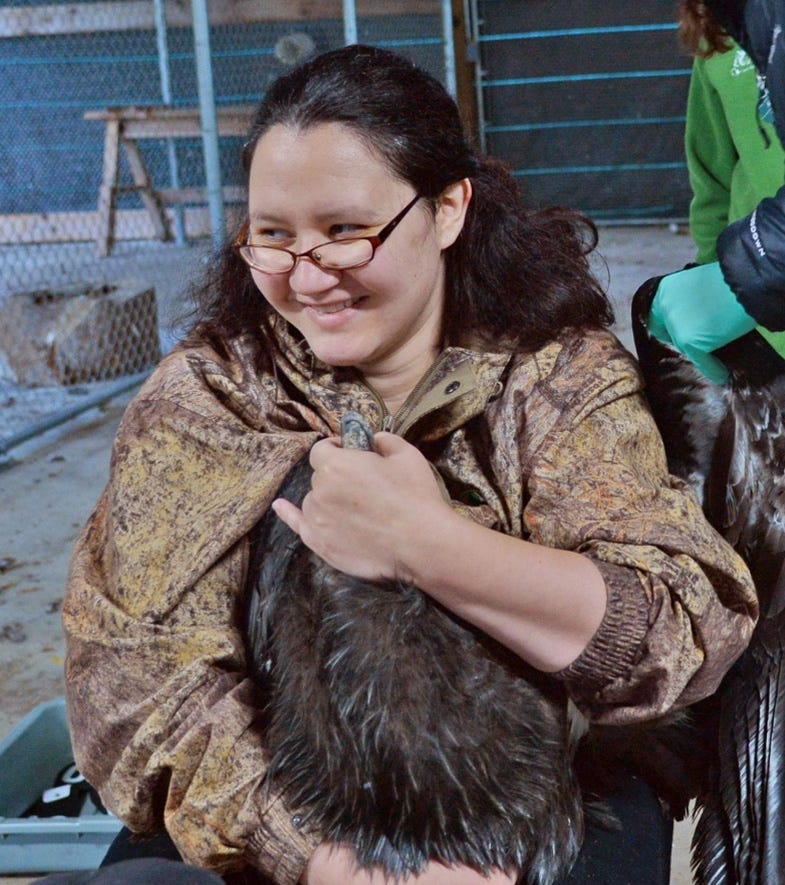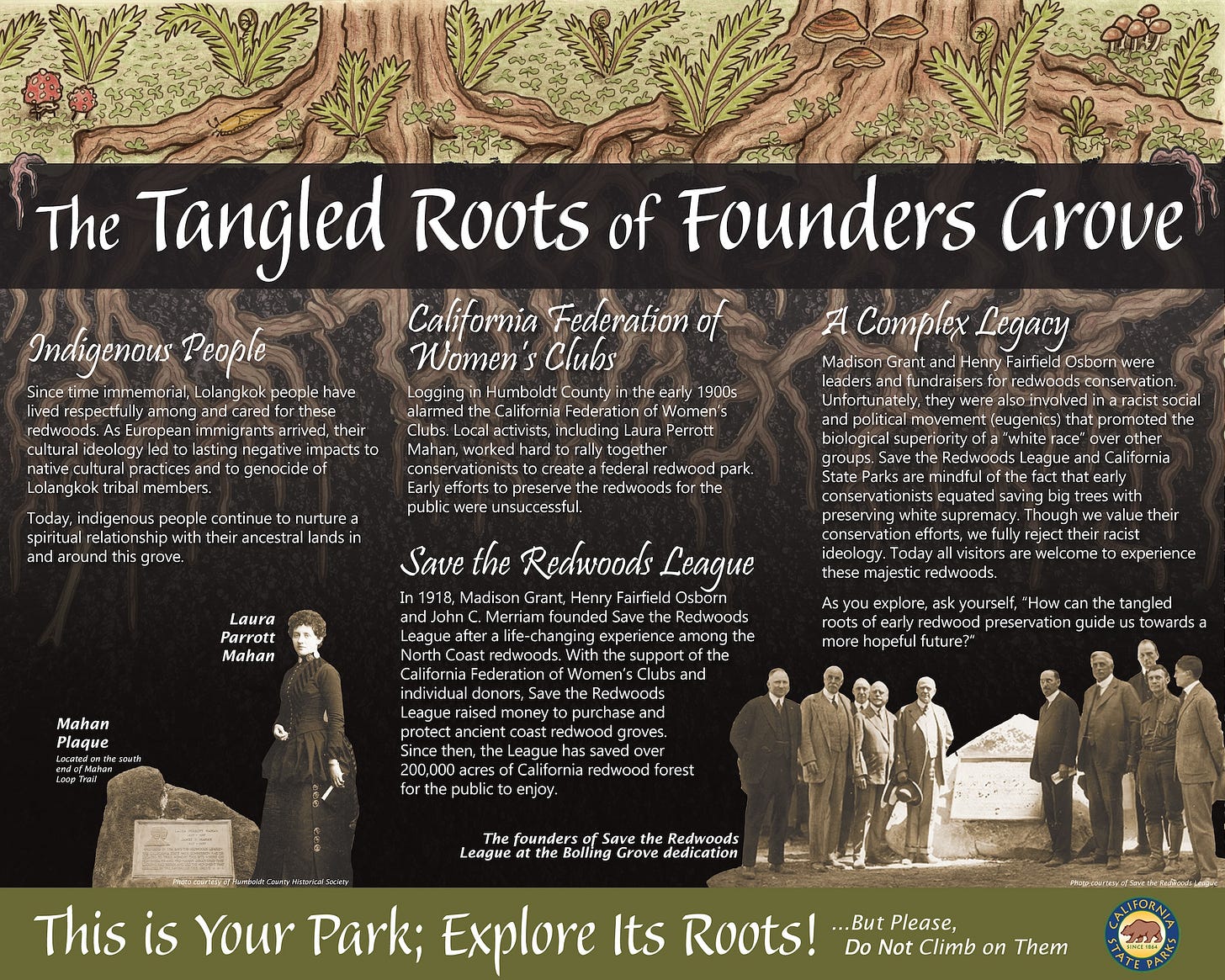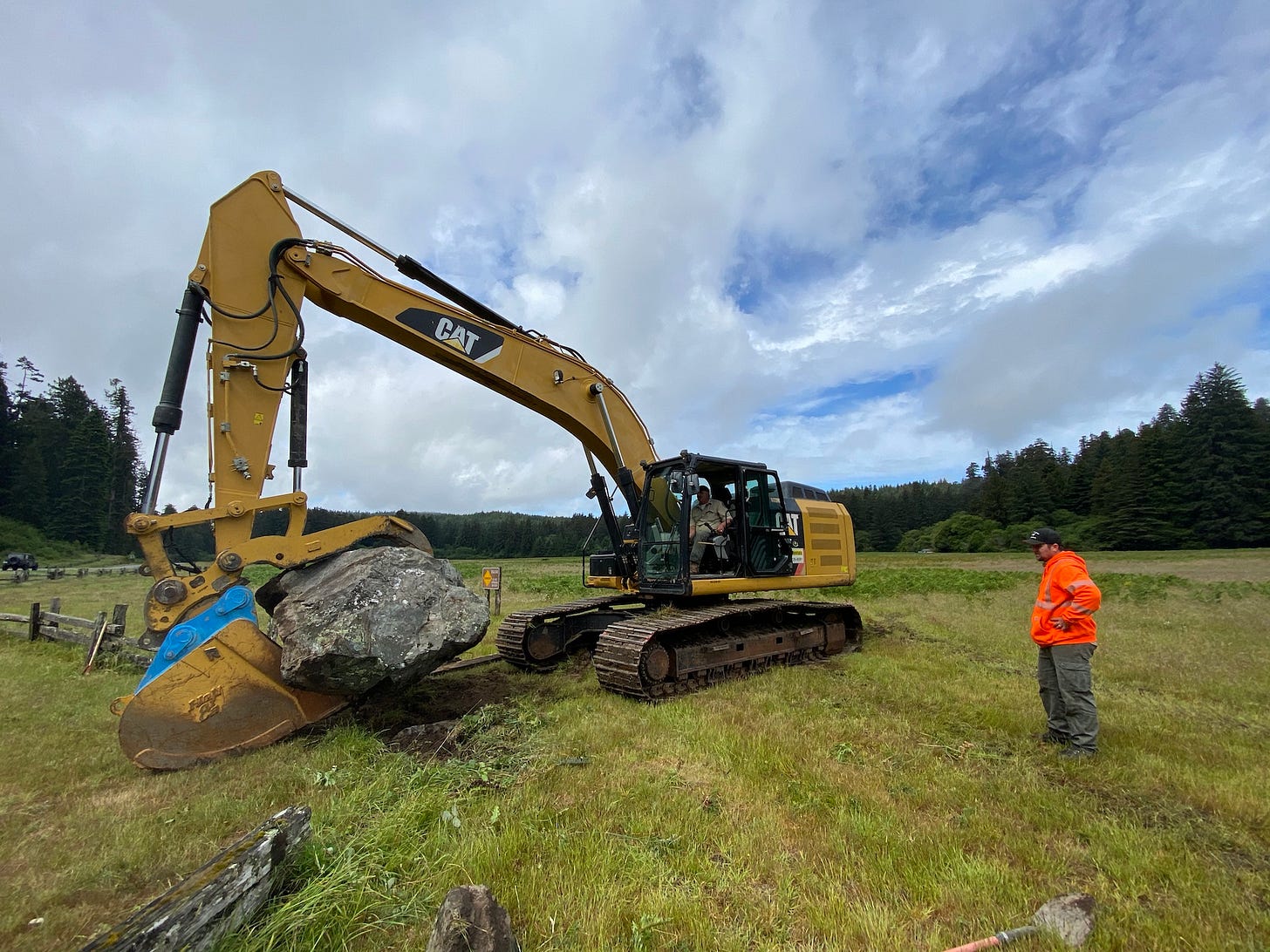Wild Light from the Dark Side, Part 2
Old-growth redwoods were originally preserved to enshrine white supremacy. That’s changing.
As Save the Redwoods League founders Madison Grant, Henry Fairfield Osborn, and John C. Merriam saw it, historical necessity required that Native Californians lose the tall trees they had called home for millennia. Nordic Euro-Americans had proven themselves the earth’s dominant race, so tribal peoples had no choice but to accept their demise and dispossession. Conquest was both evolutionary necessity and white right.
It came to California’s northern coast and its peoples — primarily the Yuroks as well as other, smaller tribes, such as the Wiyots and the Tolowas — in the form of disease and armed force. Prospectors invaded in the 1850s, following rivers inland to seek gold and bringing with them devastating pathogens and fearsome weaponry. They took by force whatever they wanted, from mining sites to tall trees to fishing holes to concubines. The tribes did fight back, first against local settler militias in the Red Cap War of 1854–55, then against the U. S. Army in the Humboldt Campaign of 1863–64. Still, in even the bravest hands bows, arrows, and spears stood little chance against rifles and pistols. By the end of the 19th century, three out of four Yuroks had been rubbed out.

In the 125 years since, the tribe’s fortunes have slowly improved. Today the Yuroks, with some 5,000 citizens and a reservation along the Klamath River, are California’s largest tribal nation. Among a number of initiatives launched to heal the damage done by conquest, the Yuroks today are partnering with the National Park Service and the U. S. Fish and Wildlife Service to bring the California condor back to its historical range across northwest California, southern Oregon, and northwest Nevada. This effort, which began in 2003 with the tribal elders’ vision of a wild world returning to balance after a rapacious century and a half, has been eminently successful. Today 18 condors circle and soar in the skies of northwest California, and more of the giant birds will be released this year.
The tribal concern with rebalancing a damaged world led unerringly to the redwoods themselves. To the Yuroks, the trees represent far more than standing timber:
Our traditional stories teach us that the redwood trees are sacred living beings. Although we use them in our homes and canoes, we also respect redwood trees because they stand as guardians over our sacred places.

Meanwhile, a new generation of environmentalists is owning up to the screaming racism of the Save the Redwoods League’s founders and seeking a more equitable future. In 2020 Sam Hodder, the league’s CEO (he says it stands for “Chief Enthusiast for the Outdoors”), published an editorial underscoring the founders’ white supremacy and committing the league to a strategy of including all Americans, especially those long excluded from park lands.

The following year, the league worked with California State Parks to install revised signage repudiating the white supremacy of Save the Redwoods Leagues’s founders. In addition, a memorial boulder in Prairie Creek Redwoods State Park dedicated to Madison Grant, author of The Passing of the Great Race, was removed. The league declared:
How we choose to interpret resources and history as well as how places are named makes a tremendous difference to those who encounter them. If we want a future where everyone feels genuinely welcome at redwood and giant sequoia parks, then we can’t ignore or promote values that are oppressive at their core.
Just this past year the league walked that talk a giant step further. A dozen years back, Save the Redwoods League purchased the derelict 125-acre Orick Mill Site at the strategic confluence of Redwood and Prairie Creeks, in the center of the traditional Yurok homeland. Known as ‘O Rew in the Yurok tongue and long a fishing camp, the site was occupied for more than 50 years by a lumber mill that fed on old-growth redwoods and paved over the stream channel and flood plain. The league’s vision is to restore and rewild the site and add it to the redwood parks complex. To get there, Save the Redwoods is collaborating with, among others, the National Park Service, California State Parks, and — most significantly — the Yurok Tribe.
As part of the ‘O Rew restoration effort, Yurok Tribe crews constructed a new, nearly mile-long, meandering stream channel with two connected ponds and approximately 20 acres of floodplain. More than 50,000 native plants have been planted along stream, ponds, and floodplain. Thousands of juvenile coho and chinook salmon and steelhead are already taking advantage of the new habitat. So are red-legged frogs, northwestern salamanders, elk, and many species of waterfowl and songbirds.
Just a little less than a year ago the tribe signed an agreement with Save the Redwoods League to receive ownership of ‘O Rew by 2026 and co-manage it with the National Park Service and California State Parks as the southern gateway to the redwood parks complex. In the meantime, the league is building visitor amenities and hiking trails, while the tribe continues its revegetation work.
For Rosie Clayburn, the Yurok Tribe’s tribal heritage preservation officer who has worked on the site since before Save the Redwoods League acquired it, the ‘O Rew Redwoods Gateway offers a way to tell what has been an untold story:
Our vision is to build a cultural visitor center. That’s a big piece for us. We have seen what happens when we are not interpreting our culture, when we are not the ones telling our story. We want it to be different by being able to tell our story and being able to have control and have a say on this site. I can tell you what I want to tell you. And no one else is telling me what I have to tell you.
Were they here to hear Clayburn’s vision for the future of ‘O Rew, Madison Grant, Henry Fairfield Osborn, and John C. Merriam would surely chortle and choke. From their perspective as well-heeled white supremacists, turning ‘O Rew over to the Yurok Tribe is unimaginable. Now their smug racism has been overturned, with more than a little tribal help, and justice is added to the wild’s many assets and attractions.
Up next: John Muir would howl at how Trump’s trashing national parks.
DOGE staffing cuts threaten Yosemite
Elon Musk’s bad boys are doing their best to savage and starve Yosemite National Park. Mimi Dwyer and Michael Wines of the New York Times uncovered how minuscule “savings” add up to wholesale destruction of the irreplaceable. Read their account and prepare to channel your outrage. More next week.




